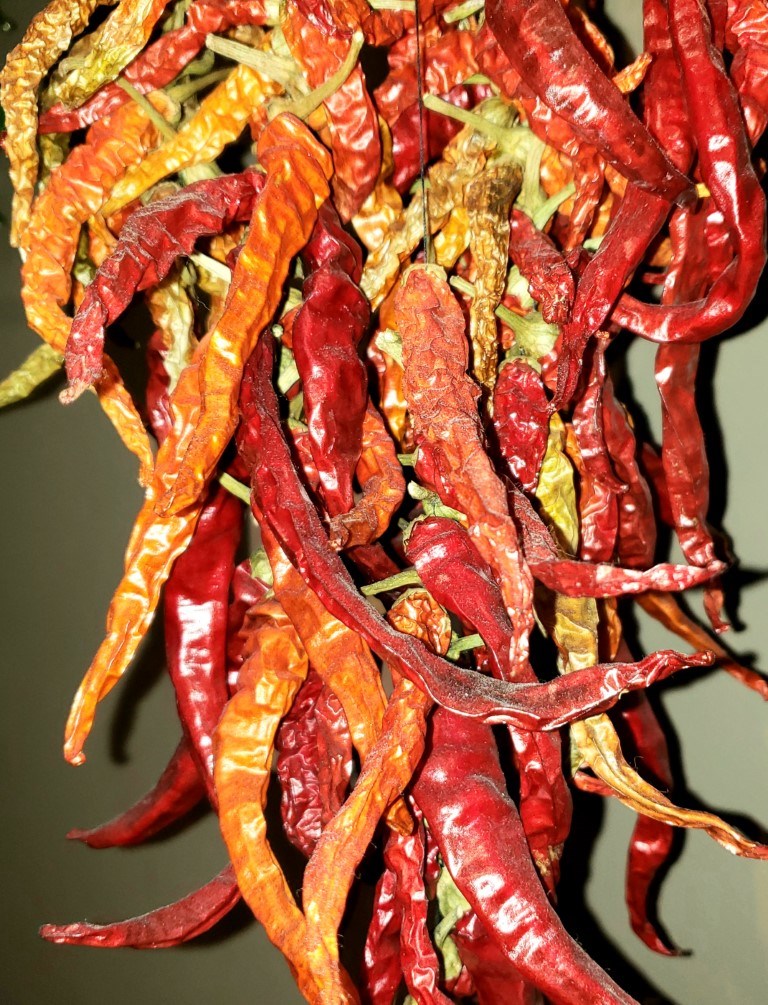For the past few years, I have been enjoying growing a vast array of peppers. If you grow them, then you may get a few ideas on some new types to grow. If you do not grow peppers, then I hope this series of articles entices you to try your hand growing peppers. This article will focus mainly on the hotter peppers but there is always some general knowledge shared about growing any kind of pepper.
Hot peppers are native to Central and Â鶹ÊÓƵ America and we think they were first found and then shared by Columbus when he sailed into what is now Bolivia. Columbus took these delectable plants back to Spain and Portuguese trading vessels then shared them to Africa, the Middle East, Persia, India, Â鶹ÊÓƵeast Asia and China. Over the years, these peppers have become an integral ingredient of Indian curries, Oriental stir fries and African stews.
Sorting out the name of “pepper” back to the times of Columbus is a bit of a guessing game. We assume that that name “pepper” was given to these plants due to the hot sense on the palate when consuming black pepper (Piper nigrum) as it was then the hottest spice commonly available in Spain. However, in comparing black pepper to chilli peppers there is little botanical resemblance. In fact, in most areas, chilli peppers are referred to as chillies or perhaps capsicums rather than peppers. In fact, if you look at the meaning of the botanical name Capsicum – it is derived from Greek meaning, “to bite.” I guess that when you taste a really hot pepper, it sure feels like a bite!
I had the great pleasure of being introduced to the ghost pepper when I was visiting Texas. A local farmer's market was selling a rather diverse collection of salsa. One was made with what is claimed to be the hottest pepper in the world - the Bhut Jolokia or ghost pepper. This pepper is originally from the Assam area in India and has a Scoville scale rating of one million. It was awarded the Guinness World Record in 2006 as the world’s hottest spice topping the Red Savina Habanero. The Carolina Reaper is the current world record holder as the hottest pepper.
Habaneros are considered to be some of the spiciest peppers with the Orange Habanero leading the way as the spiciest of the family. Red and Chocolate Habaneros are almost as spicy and the Caribbean Red Pepper is hotter than the Orange Habanero. The Fatali Peppers are also some of the hottest peppers and often are hotter than many of the Habaneros. One of my favourite hot peppers to grow is the Long Red Cayenne which is also the image attached to this article. As you can see I dry them for easy use throughout the year.
Jamaican Hot Chocolate Peppers are part of the Habanero family but is a dark chocolate colour with a hot, smoky flavour. Another smoky pepper is the Pasilla Bajio Pepper which brings less spice but a lovely smoky flavour.
The heat or hotness in any capsicum (pepper) is directly related to the level of a chemical called “capsaicin” in its fruit. For those of us who are pepper connoisseurs, the greatest concentration of heat generally occurs in the seeds, inner membranes and skin. Furthermore, the concentration of heat increases with ripening so brightly coloured mature fruits are usually hotter than green fruits off the same plant. It is important to remember that the chemical capsaicin is so potent that it still delivers a fiery bite when it has been diluted to 100,000th of its pure concentration.
Culturally most peppers require a very hot summer to produce a respectable crop in the very short Saskatchewan 100-day growing season. On the prairies when we have a cooler growing season, you sometimes have to be a bit innovative to increase the heat units to get a pepper crop. Using plastic ground mulches and row covers to warm the soil and trap heat around the plants greatly increase productivity of both sweet and hot peppers, making these excellent crops possible even when we have cool summers.
Hanbidge is the Lead Horticulturist with Orchid Horticulture. Find us at ; by email at [email protected]; on facebook @orchidhort and on instagram at #orchidhort.
Tune into GROW Live on our Facebook page or check out the Youtube channel GROW



.jpg;w=120;h=80;mode=crop)
.jpg;w=120;h=80;mode=crop)
